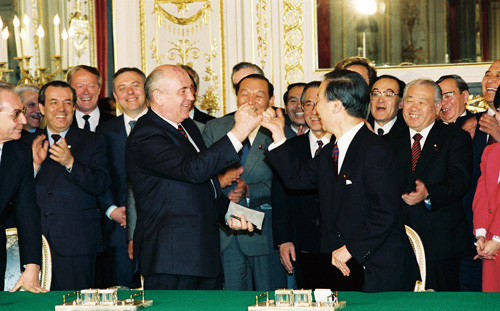The End of the Cold War in East Asia: An Overview 
How did the Cold War end in East Asia? My talk aims to answer this question by examining the international relations in East Asia from the late 1970s to the early 1990s among related countries: the United States, the Soviet Union, China, Japan, South Korea, and North Korea. The process of the Cold War ending in East Asia, I argue, was a series of bilateral attempts among related powers to normalize relations and solve major issues with hostile powers. This talk also illuminates that the bilateral developments intersected with each other and informed the way to the end of the Cold War in East Asia.
Toshihiko Aono is professor of international history at Hitotsubashi University, Tokyo and visiting fellow at FAMES. He has published books and articles on US diplomatic history and Cold War history both in English and Japanese, including: ‘ “It is not easy for the United States to carry the whole load”: Anglo-American Relations during the Berlin Crisis, 1961–1962’, Diplomatic History 34 (2)(2010); ‘Leading from Behind: Berlin, the Jupiters and Third Party Mediation during the Cuban Missile Crisis’ in David Gioe, Len Scott, Christopher Andrew, eds., An International History of the Cuban Missile Crisis: A 50-year Retrospective (Routledge, 2014). He is now completing a Cold War history book for general readers in Japanese, which examines the intersections among the four important dimensions/regions of the Cold War: superpower relations, Europe, East Asia, and the third world.
* Image: 共同声明に署名した海部総理とゴルバチョフ大統領
(写真:内閣官房内閣広報室)https://www.cas.go.jp/jp/ryodo/taiou/hoppou/hoppou02-01.html
